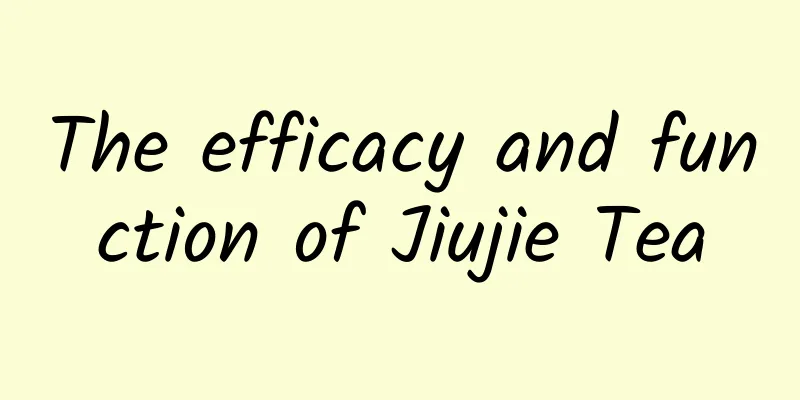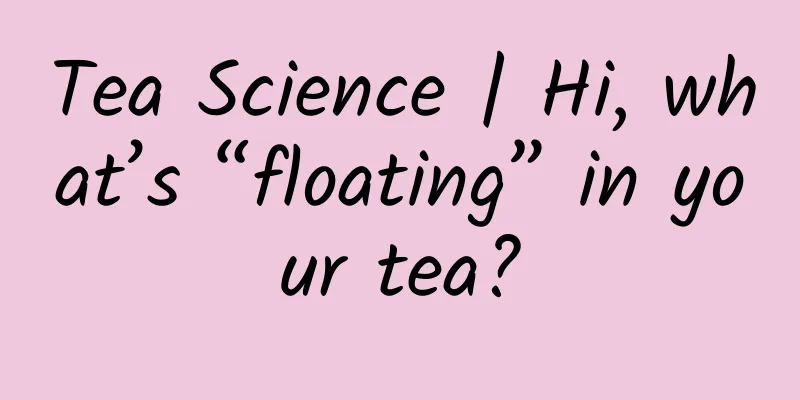The efficacy and function of Jiujie Tea

|
Traditional Chinese medicine has always been the best choice for many people to treat diseases. It is very helpful in treating diseases and you can rest assured when choosing it. Today we will introduce a Chinese medicinal material, Jiujie Tea. [Other names] Coral grass (History of Runan Garden), Guanyin tea (Essentials of Raw Medicinal Herbs), Elderberry (Illustrated Catalogue of Plant Names and Realities), Nine-section Wind (Classification of Medicinal Herbs), Bojie Tea (Record of Medicinal Herbs in Lingnan), Tender Head (Emei Medicinal Plants), Orchidaceae (Revised and Supplemented Tianbao Materia Medica), Mountain Stone Orchid, Angulan (Guangxi Veterinary Medicinal Plants), Pheasant Tea, Chicken Knee Wind, Mountain Pepper (Luchuan Materia Medica), Bone Wind Elimination (Nanning City Pharmacopoeia), Great Clematis, Nine-section Orchid, Green Jiazi, Manshanxiang (Hunan Pharmacopoeia), Next Year Red, Nine-section Red, October Red, Nine-section Cattail (Mindong Materia Medica), Chicken Bone Fragrant (Guangxi Chinese Herbal Medicine), Bone-setting Tea (Guizhou Herbal Medicine), Caviar (Selected Chinese Herbal Medicines in Simao, Yunnan). [Source] It is the branches and leaves of the plant Chrysanthemi vulgaris of the Chrysanthemi family. Harvested in summer. 【Original form】 Evergreen subshrub. The stem is 70 to 100 cm tall, green, glabrous, with swollen nodes and longitudinal ridges and grooves between nodes. Leaves are opposite, leathery, ovate-oblong to lanceolate-oblong, 6-16 cm long, 3-7 cm wide, gradually pointed at apex, pointed or cuneate at base, with coarse serrations on margin except at base, and bony tips; petioles 0.5-1.5 cm long, glabrous; stipules sheath-shaped. The flowers are small, yellow-green, unisexual, and monoecious; the male and female flowers are fused and grow in the axil of a very small bract, forming a terminal short spike inflorescence; there is 1 stamen, the connective is swollen into an ovate shape, and the anthers are 2-chambered; there is 1 ovary, ovate, and the stigma is sessile. The drupe is spherical, about 3 mm in diameter, and red when ripe. Flowering period is June. The fruiting period is from August to September. [Habitat distribution] Growing in the shade and moist places of jungle. Distributed in Sichuan, Yunnan, Guizhou, Zhejiang, Anhui, Fujian, Jiangxi, Hubei, Hunan, Guangxi, Guangdong and other places. Produced in Sichuan, Hunan, Guangdong, Guangxi and other places. [Properties] Dry young branches and leaves, stems and branches with obvious nodes, round and brown. The leaves are opposite, thinly leathery, ovate-oblong or lanceolate-oblong, brown or green-brown, with coarse serrations on the edges except at the base, and bony tips. Slight smell and light taste. [Chemical composition] The leaves contain coumarone, lactone, flavonoid glycosides, cyanogenic glycosides, volatile oil and tannic acid. 【Nature and flavor】 Spicy, neutral. 【Functions and indications】 Antibacterial and anti-inflammatory, dispelling wind and dampness, promoting blood circulation and relieving pain. Treat pneumonia, acute appendicitis, acute gastroenteritis, bacillary dysentery, rheumatic pain, contusions, and fractures. [Usage and Dosage] For oral use: decocted in water, 2 to 5 qian; or soaked in wine. For external use: mash and apply or decoct in water for fumigation and washing. 【Note】 People with Yin deficiency and hyperactivity of fire and pregnant women should not take this medicine. [Additional prescription] ① Treat injuries from falls, fractures, and rheumatoid arthritis: mash fresh bonesetter grass, fry it, and apply it to the affected area, or use five cents to one ounce of the root, soak it in wine and drink it. (Guangxi Chinese Herbal Medicine) 【Clinical application】 ①Treatment of various inflammatory diseases 【Excerpt】 《*Dictionary》 This article introduces some basic knowledge about the medicinal material Jiujie Tea. Jiujie Tea is very effective in treating some related diseases of the human body. Moreover, Jiujie Tea has a certain regulating effect on the body and can be consumed in moderation at ordinary times. |
<<: The efficacy and function of Guri Fragrant[Picture]
>>: The efficacy and function of Jiudaosheng
Recommend
The efficacy and function of purple vine
Purple Ivy is a common medicinal material in trad...
The efficacy and function of eagle claws
Eagle claws are something that many people are ve...
The efficacy and function of eel bones
Eel bones are a kind of traditional Chinese medic...
The efficacy and function of the Yellow River naked splittail fish
I believe many people are familiar with the Yello...
What are the effects of Astragalus soup
Everyone has made such food. Astragalus soup can ...
What are the effects of motherwort pollen
Motherwort is a kind of flower and also a kind of...
What are the Chinese patent medicines for nourishing the spleen and stomach?
Many elderly people choose traditional Chinese me...
Do you take antibiotics when you have inflammation? Is it really a panacea?
When you have a cold or fever, some people’s firs...
Severe cases can be fatal! These 4 things may cause blood clots, which many people often do but have been ignored
In life, many people may not regard thrombosis as...
The difference between Piper melongena and Litsea cubeba
Litsea cubeba and Piper melongena are both fruits...
The efficacy and function of pseudo-conger root
Many people know that Pseudo-tuberculosis has uni...
Why does my conjunctivitis recur when winter comes?
Winter is here, the air becomes cold and dry, and...
The efficacy and function of Forsythia suspensa
Chinese medicine has different effects on our bod...
Breaking news! Positive matter can exist because of neutrinos, which reshuffle the positive and antimatter!
Scientific research continues to surprise, and no...
Nutritional value of marjoram
Marjoram is a fragrant herb with many uses. It ca...









